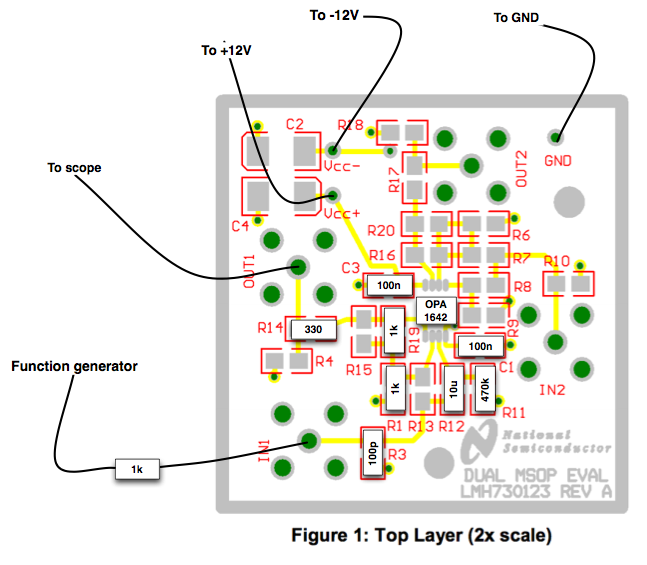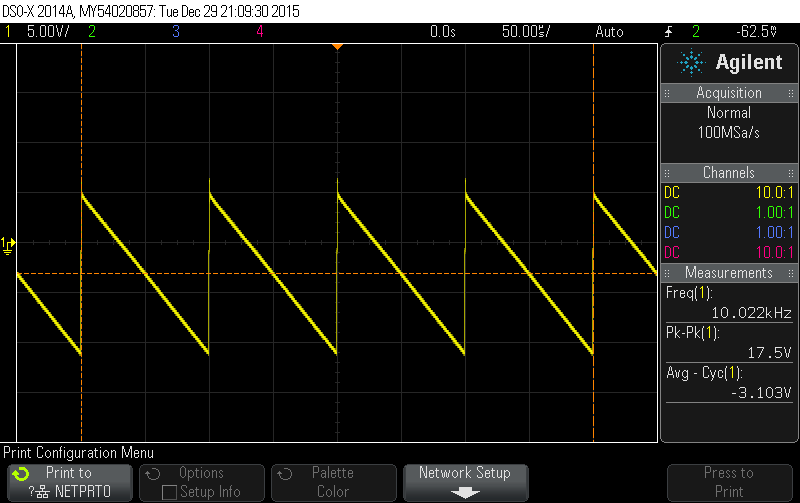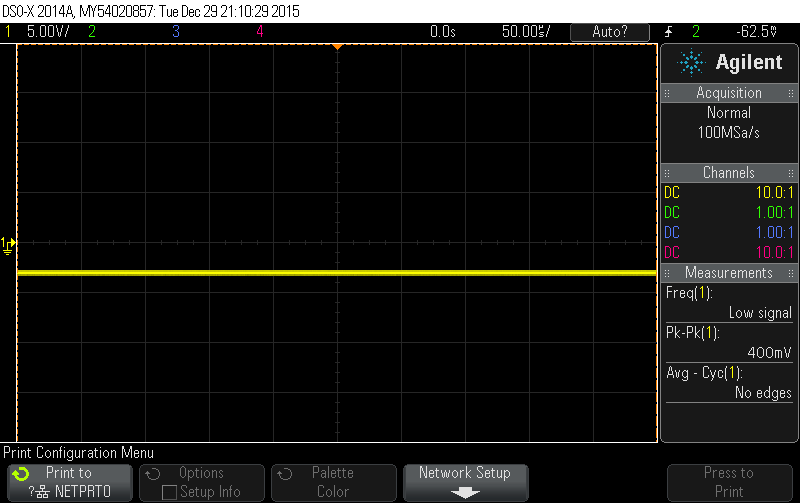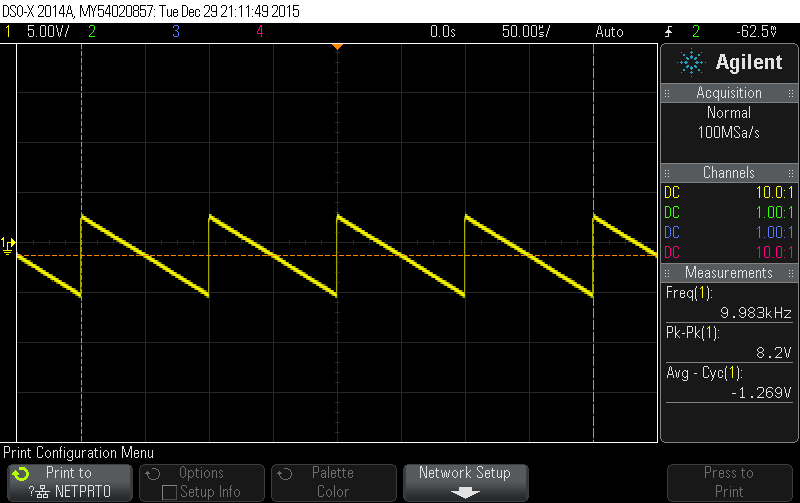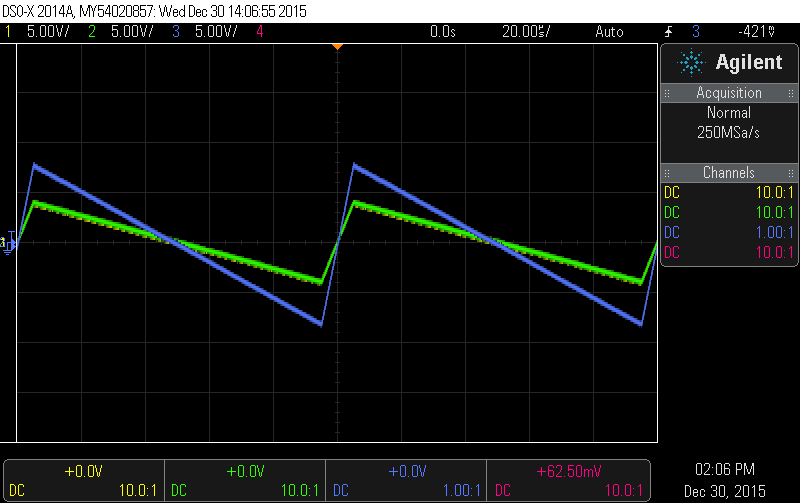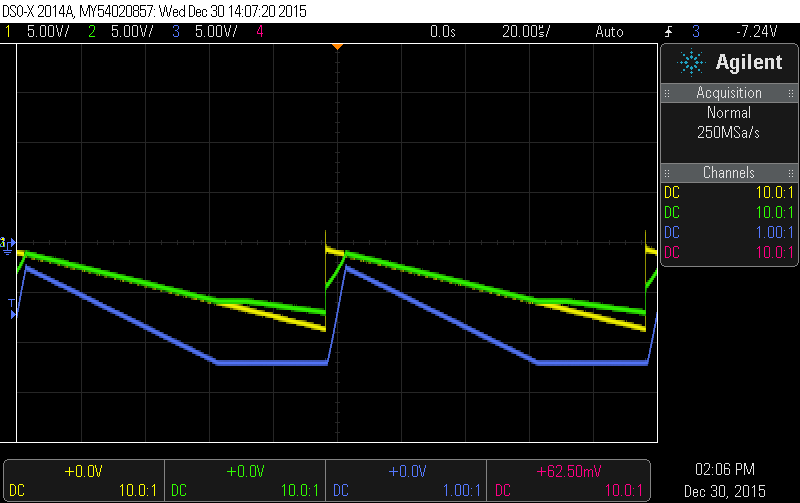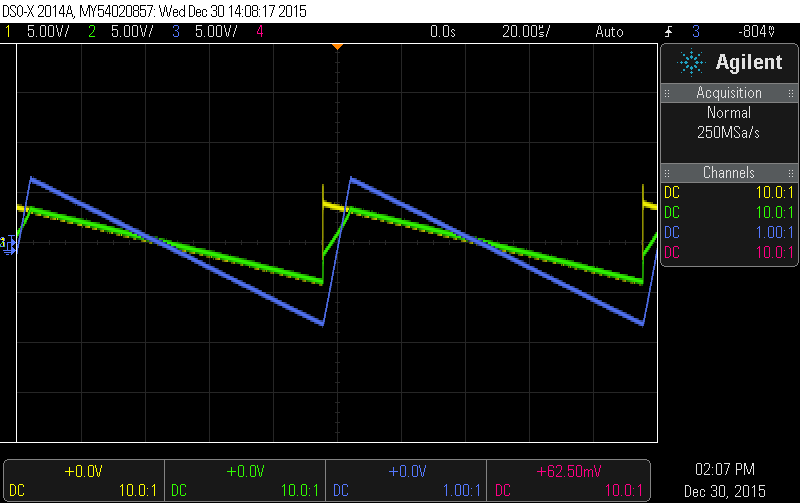The schematic is that of appendix A (page 32) of TIPD186 - more precisely the input gain stage (U1A). This circuit has been built on a LMH730123 board (P1 replaced by a wire, so the expected gain is 2). Power supply is +/- 12V
Sending a 8Vpp, 0V DC, 1kHz ramp signal straight from a signal generator to J1 through a 1k resistor, I observe that U1A's output has an unwanted negative DC offset of about -3V.
The problem goes away when C4 is shorted (but my application requires AC-coupling). Reducing the slew-rate of the waveform slightly alleviates the problem, but in my application the source impedance will be in the 1k to 100k range, thus I can't increase the value of C7 to filter the edges of the waveform before it hits the op-amp.
What causes this issue?
I could reproduce it with OPA1642 and OPA1652 (where the offset is even higher)


